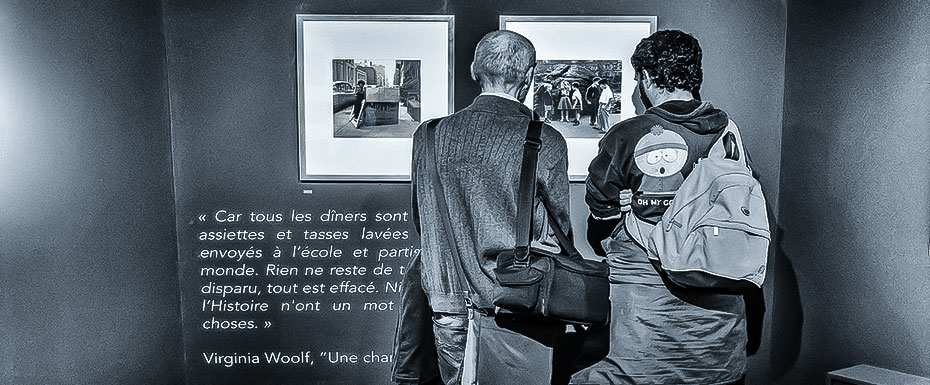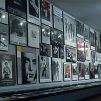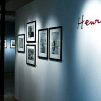
Often called the “nanny-photographer”, Vivian Maier became known to the wide public only several years ago. Her street photos reflect twentieth-century American life. She kept her talent a secret for a long time, so her fame came only after her death in 2009. It was impossible to find relatives who knew her personally. Therefore, many facts of Mayer’s biography are unknown. This article is an attempt to collect all the meaningful information about Vivian’s life available on the Internet.
Early Years
Vivian Dorothy Maier was born on February 1, 1926, and spent most of her childhood in New York. Maier’s parents were not happily married, so they divorced a year after her birth. When she was only 4 years old, her mother took her to France. She returned to America several times and tried to earn her first money there. Maier began selling sweets at a New York candy store at the age of 11-12. Only at 25 did she finally leave France and moved to America for good.
Nanny Photographer
Having settled, Maier decided to work as a nanny and got a job with a family in Southampton. The degree of her professionalism can be judged by the families with whom she worked for many years: among them were the wealthy Ginzburgs and Raymonds. American TV presenter Phil Donahue, whose children were also raised by Vivian, recalls how at the first meeting he tried to call her “Miss”, but she strictly replied: “Miss Maier, please. And I’m proud of it”. By this time, she had been involved in photography for two years and mastered the essential skills.
All the children wanted to be with Vivian. She was a real enthusiast who took children on wild adventures. For example, if she found a snake on the side of the road, then she immediately carried it into the house and showed it to the children. And she always had a camera with her to capture it.
Vivian combined daily walks with children and her hobby harmoniously: she always took a camera with her and tried not to miss a single detail of everyday life in the city. Connoisseurs of her work note that Maier’s works are particularly lively. She left us black and white, and then color photographs – light, bold, often declaring something or revealing a whole story.
Vivian’s passion was not limited to photography, she was seriously interested in documentary filmmaking. Maier has always gravitated towards people who are not very lucky in life. Exploring the city streets, she found the poor and recorded video and audio clips with them, and she did it no less professionally.
Carefully concealing her activities, Vivian developed the pictures in the bathroom and put the negatives in boxes. She signed many of her photographs by hand on the back. Maier transformed a separate space in her apartment into a whole darkroom that no one was allowed to enter. When she moved to a new home, her first request was to install a lock on the door of that room.
Personality

Vivian’s self-portraits are striking in their originality and variety. From them, you can understand how Vivian liked to play with reflections: she could never calmly walk past a mirror, a shop window, a window on a train, or a metal surface. In her self-portraits, you never see only Vivian – there is always something else: silhouettes, texture, geometry, light. She always appears before us differently but does not change her style: a beret or a wide-brimmed hat, a short haircut, a strict jacket, and a simple skirt.
Maier is associated with noble simplicity. Her pictures are intricate but always clear for perception and understanding. It’s incredible how this woman could see beauty in everything: be it a simple window in a city store or the face of an ordinary stranger in a hat. Vivian was able to transform familiar things into something new and unique, striking in its singularity. She did not need fame and universal recognition. She just did what she loved and did it for herself, not expecting approval from anyone. With her photographs, Maier eagerly caught life in its various manifestations.
Vivian was never married and had no children, but she was very familiar with the taste of motherhood: working as a nanny for 40 years, she raised many children and was like a mother to them. Children have always considered Maier a good friend, with a touch of bizarre and an irresistible passion for adventure.
Last Years
In the 80s, Vivian’s life became burdensome: there was not enough money to pay for housing, so she decided to put off her camera for a while and focus on the problem. At some point, Maier practically became homeless but then managed to move into a small one-room apartment.
In 2008, Vivian slipped on ice in downtown Chicago and fell, hitting her head. Doctors hoped for her full recovery, but Maier’s health began to deteriorate. There was no one to look after her, and she ended up in a nursing home. Shortly after that, in 2009, she passed away at the age of 83. Vivian Dorothy Maier spent her entire life in obscurity and died, not suspecting that a few years later, the whole world would talk about her and her little hobby.
Fame
When Vivian was going through financial difficulties and could not pay rent regularly, the landlord decided to put boxes with Vivian’s works up for auction, where he immediately found a buyer. It was John Maloof, a former real estate agent in Chicago. For $380, he purchased over 100,000 negatives in 2007.
Realizing the potential value of the discovered images, John decided to promote them in commercial galleries, museum exhibitions, and photo hosting sites. To begin with, he posted about a hundred photos on his blog, but this did not cause much reaction from the audience, but it was on Flickr that the posts started going viral.
The first exhibition took place in 2011 in Chicago. To make it legal, it was necessary to redeem copyrights. So Maloof turned to genealogists for help in finding Vivian’s closest relatives. Unfortunately, only Maier’s cousin, Sylvian Josseau, who lives in France, was found.
David Deal, a lawyer and a former professional photographer, questioned Maloof’s ownership. He filed a lawsuit in court, convinced that Vivian Maier had other close relatives and the rights to her pictures actually belong to them. David Deal decided to search for her heirs independently, which led him to Francis Bayle, another cousin of Maier. However, an exhausting trial proclaimed Maier’s photos a public domain property, to be enjoyed freely.





